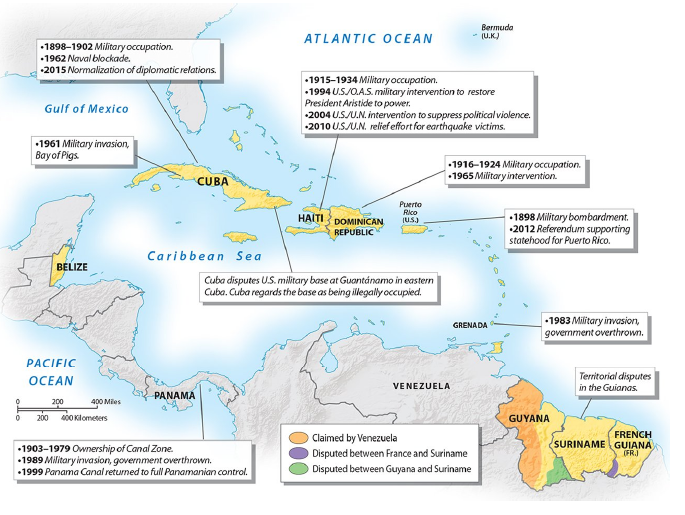Describe and analyze the nature of U.S. involvement in the Caribbean from 1898 to the present.

What will be an ideal response?
The American involvement in the Caribbean has often taken on an imperial and aggressive nature. U.S. involvement began in 1898 with the American victory in the Spanish-American War which saw the United States gain control of Puerto Rico and control Cuban affairs for the first half of the 20th century. U.S. troops also occupied the Dominican Republic and Haiti during various parts of the 20th century. The United States invaded Grenada in 1983 to prevent a communist-style government friendly to Havana from emerging. American imperialism continues today with the U.S. military's military prison at Guantanamo Bay, Cuba. Business interests, often to the detriment of democratic principles, have characterized U.S. involvement.
You might also like to view...
A wave of frequency 1000 Hz vibrates at
A. more than 1000 cycles per second. B. less than 1000 cycles per second. C. 1000 cycles per second. D. none of the above
Solar system planets are classified as either ____________________ or ____________________ planets based upon
their chemical and physical properties. Fill in the blank(s) with the appropriate word(s).
Why do the eras of the Phanerozoic eon all end with "zoic"?
A) They are based on rock called zoisites. B) These names refer to life or living things; they invoke the changes in fossil organisms from one era to the next. C) "Zoic" means "time" in Latin. D) These eras were all first described near the London Zoo, so the names pay tribute to that location.
When populations of two different species interact over long periods of time, changes in the gene pool of one species can lead to changes in the gene pool of the other. What is this called?
A. competition B. coevolution C. parasitism D. commensalism E. mutualism